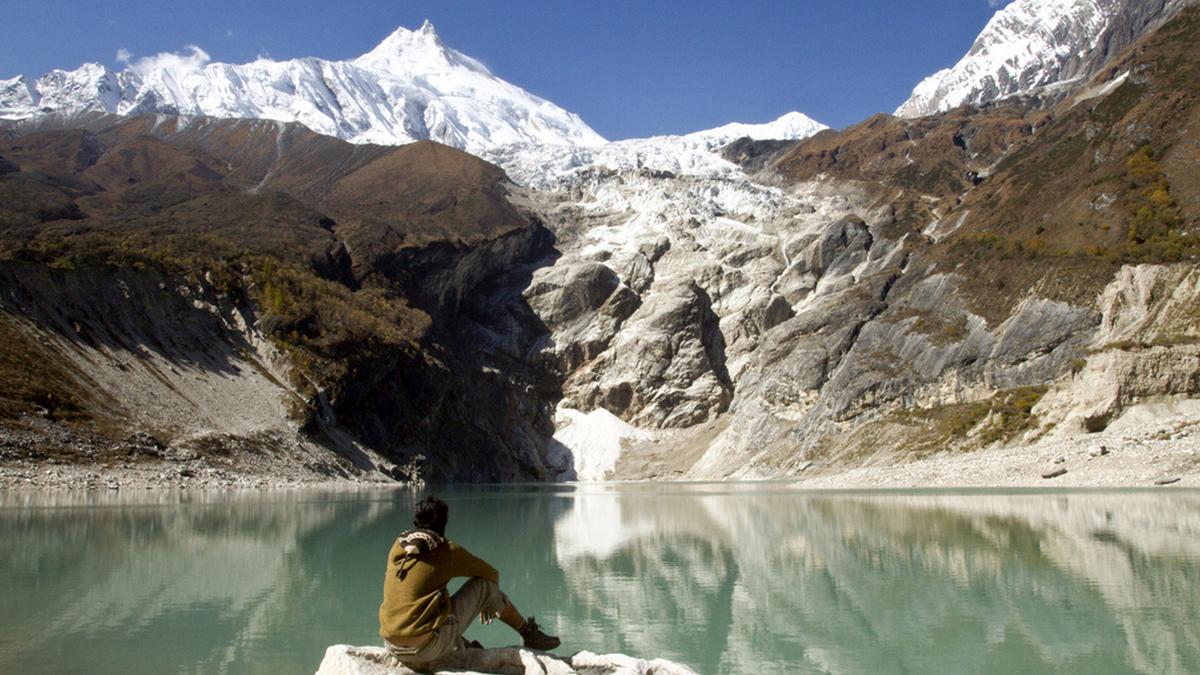Science
Urgent Need for Early Warning Systems in Himalayan Region

A sudden blizzard hit Mount Everest’s Tibetan side on the first weekend of March 2024, creating dire conditions that trapped over a thousand trekkers. Torrential snowfall and lightning strikes struck the area, with local villagers assisting in rescue efforts through knee-deep snow. Meanwhile, heavy rain and snowfall across other parts of the Himalayas, particularly in Nepal and Darjeeling, caused devastating floods and landslides, leading to significant loss of life. This incident is part of a troubling trend, with the Himalayas experiencing an alarming increase in disasters over recent decades.
According to a report from Down To Earth (DTE), of the 687 disasters reported in India between 1900 and 2022, approximately 240 occurred in the Himalayas. These disasters include events such as glacial lake outbursts, landslides, floods, wildfires, and earthquakes. The rate at which disasters are occurring has escalated sharply, with the last decade alone, from 2013 to 2022, witnessing 68 disasters, accounting for 44% of all reported incidents in India.
The DTE report highlights that the region, which recorded only five disasters between 1902 and 1962, has seen a rapid decade-on-decade increase. Climate change is significantly contributing to the unpredictability of the Himalayas, with research indicating that the region is warming at a rate of 0.15 to 0.60 degrees Celsius per decade, as stated in a paper published in Springer Nature.
A pressing question arises: why does the Himalayas lack effective early warning systems (EWS), which could mitigate disasters and save lives? The urgency for improved EWS is underscored by the region’s vulnerability to imminent earthquakes, landslides, snowstorms, and extreme temperatures.
Argha Banerjee, a glaciologist at IISER Pune, emphasized the need for a robust EWS, recommending that one be installed in each valley across the entire Himalayan arc. “We face a significant challenge in establishing indigenous, low-cost, weather-proof EWS that local communities can easily operate,” he stated. Current monitoring methods are inadequate, with drones proving ineffective in the rugged, glacier-covered landscape of the Himalayas.
Artificial intelligence (AI) could play a crucial role in transforming real-time data into credible warnings. While there is potential for satellite technology, the high costs associated with satellite links limit their scalability. Banerjee pointed out that it is essential to involve and train local populations in maintaining and operating EWS, as well as in responding to warnings.
Successful examples of disaster prevention in the Himalayas exist, such as the timely intervention during a recent glacier collapse in the Swiss Alps, where a local shepherd alerted a downstream village, averting a humanitarian crisis. A study published by researchers from the Chinese Academy of Sciences in 2022 demonstrated the creation of an EWS for glacial lake outburst floods (GLOFs) in Cirenmaco, highlighting the effectiveness of monitoring lake levels and other indicators. This system, according to the authors of the paper in the International Journal of Disaster Risk Reduction, can significantly reduce loss of life and economic impact.
In India, Vinod Kumar Gaur, a seismologist and former director of the National Geophysical Research Institute, is currently working on implementing three EWS projects. One initiative, funded by the Indian environment ministry, aims to provide advance hailstorm alerts to apple orchard managers in Uttarakhand and Himachal Pradesh. Gaur noted that these systems integrate local data and AI predictions, offering a localized understanding of atmospheric conditions.
The urgency for improved EWS is further illustrated by a study published in the journal Climate Change, which projected that 90% of the Himalayas could experience drought lasting more than a year if global warming continues to rise by 3 degrees Celsius. This alarming forecast indicates that wildlife in the region is already facing significant challenges due to climate change, with species like musk deer and snow trout being pushed to higher altitudes.
Despite the clear need for action, Himalayan disaster preparedness is not receiving the attention it warrants from scientists, engineers, funding agencies, or policymakers at various levels, according to Banerjee. “The Himalayan population deserves better. This is an urgent need that should be prioritized nationally,” he stated.
As the frequency and severity of disasters in the Himalayas continue to rise, the establishment of effective early warning systems is critical. These systems could ultimately save lives, protect livelihoods, and mitigate the devastating impacts of natural disasters in this vulnerable and vital region.
-

 World5 months ago
World5 months agoSBI Announces QIP Floor Price at ₹811.05 Per Share
-

 Lifestyle5 months ago
Lifestyle5 months agoCept Unveils ₹3.1 Crore Urban Mobility Plan for Sustainable Growth
-

 Science4 months ago
Science4 months agoNew Blood Group Discovered in South Indian Woman at Rotary Centre
-

 World5 months ago
World5 months agoTorrential Rains Cause Flash Flooding in New York and New Jersey
-

 Top Stories5 months ago
Top Stories5 months agoKonkani Cultural Organisation to Host Pearl Jubilee in Abu Dhabi
-

 Sports4 months ago
Sports4 months agoBroad Advocates for Bowling Change Ahead of Final Test Against India
-

 Science5 months ago
Science5 months agoNothing Headphone 1 Review: A Bold Contender in Audio Design
-

 Top Stories5 months ago
Top Stories5 months agoAir India Crash Investigation Highlights Boeing Fuel Switch Concerns
-

 Business5 months ago
Business5 months agoIndian Stock Market Rebounds: Sensex and Nifty Rise After Four-Day Decline
-

 Sports4 months ago
Sports4 months agoCristian Totti Retires at 19: Pressure of Fame Takes Toll
-

 Politics5 months ago
Politics5 months agoAbandoned Doberman Finds New Home After Journey to Prague
-

 Top Stories5 months ago
Top Stories5 months agoPatna Bank Manager Abhishek Varun Found Dead in Well









